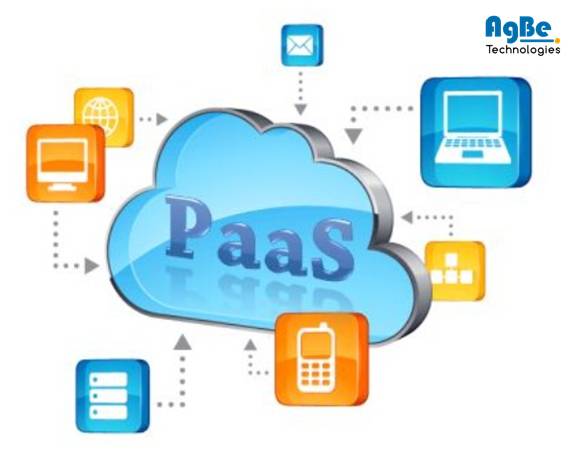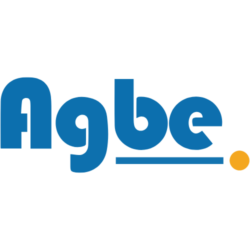
With the fast-paced change in the dynamics of the digital world, businesses face the huge challenge of managing ever-flowing data and new technologies. Purchasing expensive hardware and software for data management has become archaic and time-consuming. This not only impacts the organizational efficiency, but also the profitability of the business.
The paradigm shift from physical infrastructure to cloud computing has given rise to the concept of ‘Platform as a Service’.
What is PaaS?
As the name suggests Platform as a Service is a platform-based environment existing in the cloud in which software and hardware resources are provided by a third party to support businesses to most effectively and efficiently build simple cloud-based applications or enterprise solutions.
PaaS is designed in such a manner that it supports the complete web application lifecycle which includes building, testing, deploying, managing, updating, and maintenance.
PaaS consist of the following components:
- Physical Infrastructure-Servers, storage, and networking
- Deployment tools (Cloud applications)
- Graphic user interface (GUI)
Now that you have understood what PaaS is, you must be wondering how does PaaS work?
The PaaS interface is designed in such a manner that all backend management is taken care of through the provider’s infrastructure. This implies that PaaS allows businesses to avoid the expense and complexity of buying and managing software licenses or installing cumbersome developer tools on local computers. PaaS exists online on the web, which makes it easier to use.
The online interface is used by PaaS for delivering development tools, which means that the developers can log in from anywhere and they don’t have to have an access to the local on-site computer, which used to be the case earlier. This not only provides greater flexibility but also allows teams to work remotely, considering the current pandemic scenario. PaaS allows developers to access the environment and the tools including the requisite hardware and software they need for application design, testing, and maintenance.
It is pertinent to note that PaaS does not replace a company’s IT infrastructure completely, but it uses a cloud service provider to provide users access to a runtime environment for application development through a web browser.
What are PaaS Applications?
The PaaS model can be applied in a diversified field of business functions, which may pertain to developing and deploying applications. Following is a list of some main applications that can help businesses and organizations grow multi-fold:
- Tools of App/Software Development
Since PaaS plays an important role in the development of applications and software, therefore many vendors provide various tools that are instrumental in software development. These tools are generally offered as a framework. However, the offerings are subjective from vendor to vendor.
- Middleware
The software interface that exists between user-facing applications and the machine’s operating system is known as ‘Middleware’. Users can use middleware for some basic web functions like form submissions or allowing web servers to return pages based on the profile of the users and hence the PaaS vendors sell middleware to augment the user interface and experience. It is to be noted that there is no interaction per-se between the end-users and middleware, the end-users are able to interact with the end result.
- Operating Systems
The nature of PaaS and the environment of cloud computing provides a smooth platform for the developers to work on and therefore the PaaS vendors sell operating systems built on the PaaS model and are also responsible for the maintenance of such operating systems.
- Database Management
PaaS as an environment maintained by the vendor can administer, manage and maintain databases for users with minimalistic human intervention. PaaS handles the complete database management functions independently including upgrades, backups, and monitoring, wherein no user interaction is required.
Types of PaaS
There are various types of PaaS environments based on data storage and data management. A few of them are listed below:
- Public PaaS:
Public PaaS is nothing but a service that runs on the public cloud, which means that the consumer is not required to manage the application stack infrastructure which includes but is not limited to the operating system, database, programming language, etc. Public PaaS provides simplicity and efficiency to the market. The down point of Public PaaS is that users get less to no control over their development stacks. Most small and medium-sized enterprises prefer to use public PaaS but large businesses avoid using Public PaaS due to security concerns.
- Private PaaS:
Private PaaS overcomes the biggest shortcoming pertaining to control prevailing in Public PaaS. Therefore, the user enjoys complete autonomy and control over their data. The exclusive infrastructure of the user can either be stored in a data center or on-site.
However, there are certain disadvantages of Private PaaS too, here the business consumers have to pay the cost of controlling the data. This means that they have to secure, manage, and maintain physical servers at their own cost.
- Hybrid PaaS
It is a mixture of both Public and Private PaaS which provides greater flexibility of capacity and is cost-effective. It is the best of both worlds.
- Communication PaaS
This is a type of cloud-based platform that developers use to add real-time communication features to their app service, without having to specifically build backend infrastructure. CPaaS enables embedded communications features that help businesses to save on human resources, infrastructure, and other related costs.
Mobile PaaS
Most commonly known as MPaaS. As the name suggests it pertains to the development and deployment of mobile applications through the cloud.
OpenPaaS
OpenPaaS is a type of cloud-based social platform that encourages collaboration and teamwork with a cloud framework. It provides real-time collaboration services like document editing, advanced video conferencing solutions, and business process modeling.
AgBe Technologies is known for providing leading IT consulting & delivery and cloud hosting services. We have rich experience in providing customized PaaS-based solutions to clients.
https://www.cleo.com/blog/knowledge-base-what-is-paas-platform-as-a-service
https://www.ringcentral.co.uk/gb/en/blog/definitions/platform-as-a-service-paas/



